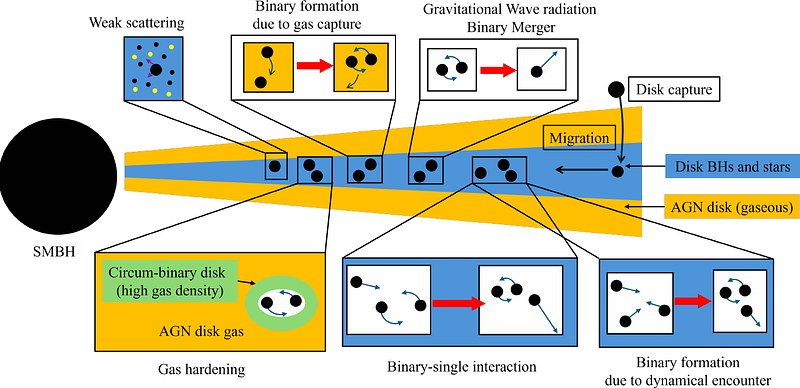What Determines the Maximum Mass of AGN-assisted Black Hole Mergers?

What Determines the Maximum Mass of AGN-assisted Black Hole Mergers?
LingQin Xue, Hiromichi Tagawa, Zoltan Haiman, Imre Bartos
AbstractThe origin of merging binary black holes detected through gravitational waves remains a fundamental question in astrophysics. While stellar evolution imposes an upper mass limit of about 50 solar mass for black holes, some observed mergers--most notably GW190521--involve significantly more massive components, suggesting alternative formation channels. Here we investigate how heavy black holes merging within Active Galactic Nucleus (AGN) disks can become. Using a comprehensive semi-analytic model incorporating 27 binary and environmental parameters, we explore the role of AGN disk conditions in shaping the upper end of the black hole mass spectrum. We find that AGN disk lifetime is the dominant factor, with high-mass mergers (>200 solar mass) only possible if disks persist for ~40 Myr. The joint electromagnetic observation of an AGN-assisted merger could therefore lead to a direct measurement of the age of an AGN disk.